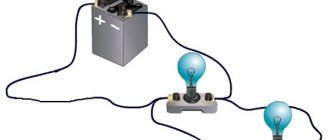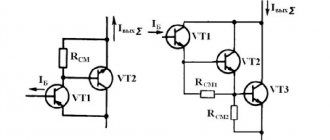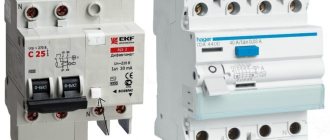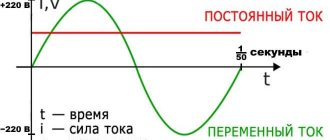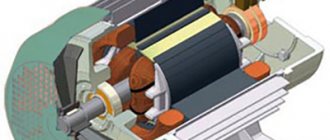A car battery is an integral part of a vehicle, without which it is impossible to start the engine, operate the on-board network and other electrical equipment. The power of the battery and its capacity indicator are the key parameters that you need to look at when choosing. A properly selected “battery” can work for a long time without causing problems.
Battery power is an important parameter necessary for choosing the right battery.
What is battery power
Starting power of batteries of different vehicles.
The starting power of the battery is the maximum output power that the power source provides for 30 seconds at a temperature of -18° C. The ability of the battery to start a cold engine depends on this parameter. There are many manufacturers, and it must be taken into account that the parameter is adjusted to different standards.
The specification that is relevant for Russian technical specifications and German DIN is the starter discharge mode (also called short discharge). Based on it, it follows: at a temperature of the working solution (electrolyte) of -18 ° C and with a discharge current of 255 A, the voltage at the terminals 30 seconds after startup should be from 9 V. If further discharge occurs, the voltage will drop to 6 V, but not earlier than after 150 seconds. By checking the battery in this way, you can be sure that it will give 3–5 attempts to start the engine. By the way, starting is considered to be 10 seconds of battery operation followed by 30 seconds of “rest”.
There are other standards: American - SAE and European - EN. In this case, the name of the specification is cold cranking current. Those who developed these standards believe that the maximum load on the battery occurs in the first seconds after starting the engine. Accordingly, for a cold start, a load greater than according to the specifications and DIN is required - about 440 A. After 10 seconds under such a load, the voltage at the terminals should not fall below 7.5 V, and after 30 seconds - below 7.2 V. The requirements of the standards are the same - in frosty conditions, the battery must provide at least three engine starts.
To summarize, battery power, depending on the starter discharge time, is a parameter that affects the number of attempts to start the engine. And the greater the battery capacity, the more such attempts will be available.
Types of car batteries
The battery is the main electrochemical source of electrical energy in a car, which is primarily necessary to start the engine.
While the engine is not running, all on-board devices are powered by the battery. From a design point of view, this device is a rectangular body with electrodes inside. This battery element is made in the form of plates made of various metals. The electrodes are placed in an acidic environment - the entire internal space is filled with electrolyte.
The operating principle of the battery is based on a chemical reaction occurring in a liquid medium. The fact is that some of the plates have a positive charge, and some have a negative charge. The process is reversible: depending on whether the battery is discharged during operation or charged, either one or the other group of plates reacts with the acidic environment.
The trading network offers the widest range of electrochemical energy sources for vehicles. It is impossible to definitely choose the best one - they are all good in their own way.
All existing car batteries are classified not only by technical parameters, but also by the composition of the electrolyte and electrodes. So, the following types of batteries are distinguished:
- Antimony is a classic type of current source, gradually losing its position. The devices owe their name to the high content of antimony in the electrode alloy, which gives the plates strength and speeds up the reaction. The cost of such batteries is low, which is undoubtedly a significant advantage. But the transience of the reaction leads to rapid evaporation of the electrolyte, requiring regular monitoring and maintenance, and this is very inconvenient. It is this shortcoming that causes a decrease in demand for such products.
- Low antimony - the best option for domestic cars. But their parameters are most ideal for very old - rare cars produced back in the days of the USSR. The plates contain a minimum of antimony, which made it possible to slow down the electrolysis processes. But they still need, albeit less frequently, maintenance - this is one of the disadvantages of the device. The advantages include low cost, minimal self-discharge during storage, and immunity to voltage surges in the on-board network.
- Calcium is a good solution for a middle-class foreign car. Instead of antimony, the plates contain calcium. Advantages:
- long service life with proper use;
- do not require maintenance;
- There is no self-discharge during storage. Minuses:
- high price;
- demanding on on-board network parameters;
- During deep discharge they lose a significant part of their capacity.
- Hybrid - characterized by a different composition of the plates: antimony is added to the positively charged ones, and calcium is added to the negatively charged ones. According to their characteristics, they are between low-antimony and calcium. Pros:
- resistant to instability of on-board network parameters;
- are not afraid of deep discharge;
- affordable price. Minuses:
- need for maintenance;
- most optimal for inexpensive and used cars.
- Gel ones are a new product on the Russian automotive market. Design features:
- instead of electrolyte, a thick gel is poured in;
- plates of pure lead without impurities are rolled into rolls;
- The case is shockproof. In terms of the number of advantages, they are leaders compared to similar equipment:
- service life reaches 10 years, but subject to proper operation;
- fastest charging;
- the possibility of a short circuit is completely excluded, the gel is an excellent dielectric;
- minimum degree of self-discharge;
- the current value does not change as the capacitance decreases. Flaws:
- the most significant is the very high cost, although quite commensurate with the quality of high-tech equipment;
- very “capricious” batteries - they instantly respond to the slightest fluctuations in the parameters of the on-board network;
- It must be charged with a special charger.
- AGM - like gel ones, do not have the usual electrolyte; it is replaced by a gel-like mass. But, unlike their more advanced analogues, these batteries have porous fiberglass gaskets installed between the plates and the gel. They gave the name to this series of rechargeable batteries. Advantages:
- reasonable cost;
- reduced sensitivity threshold to voltage instability;
- do not particularly respond to temperature conditions. Minuses:
- shorter service life;
- They are afraid of deep discharge.
- Alkaline - alkali is used as an electrolyte - a solution of caustic potassium. This type of energy source is extremely rarely used in cars. To some extent, this is due to the so-called “memory effect” that they suffer from. The essence of the phenomenon is as follows: the device remembers the limit to which it was discharged the first time, and each subsequent one is discharged exactly to it and no more. In addition, there are also negative aspects: quite impressive dimensions and weight are also not far behind, and the price is high. There are, of course, positive qualities: the absence of electrolysis processes, resistance to low temperatures and overdischarge, but they do not contribute to popularity.
- Lithium-ion is popular as an energy source for electric vehicles. They practically never occur on ordinary cars. They got their name from the lithium ion that carries electrical charge.
Positive properties:
- the highest capacity among all batteries;
- maximum possible voltage combined with compactness;
- no “memory effect”;
- minimum self-discharge value.
There is a whole bunch of disadvantages:
- a sharp drop in the inrush current at subzero temperatures;
- they age quickly - after two years of operation they lose approximately one-fifth of the capacity, and this is very significant;
- cannot tolerate full discharge;
- The voltage level is insufficient to start a conventional gasoline or diesel engine.
What does battery power depend on?
The power of the power source installed in the car depends on the value of the discharge current and the average voltage.
When the engine starts and the starter operates, the rated voltage drops and the charging current increases. That is, when the battery power consumption increases during startup, the voltage level at its terminals drops. And the lower the voltage, the worse the starter performs its task and turns the crankshaft. Inverse relationship: the more powerful the battery, the more revolutions the starter will make when starting the engine. As a result, the engine starts faster.
How many ampere hours does a car battery have?
Battery capacity is a variable value, depending on the individual characteristics of the battery. Usually the battery is assembled in series, which means the capacity is measured according to the weakest bank. The voltage is summed up.
It is known that liquid acid batteries have 6 cans, each of them carries a voltage of 2.1 - 2.15 V. Capacity is the amount of energy in ampere-hours stored in the battery. This indicator is a passport characteristic.
You can find the actual capacity by measuring the energy output from a full charge to the minimum possible discharge at a constant current and resistance. Time and current strength are recorded. Their product determines the battery capacity in ampere hours. The indicator will differ from the passport value, since the battery capacity is constantly decreasing due to additional chemical reactions.
How to calculate power
Indicators must be measured at identical time intervals. The power can be calculated using the formula: P = I x U, where P – power (Watt), I – discharge current at -18° C (Ampere), U – voltage during discharge (Volts).
Power formula.
Calculation example
Let's say there is a lead-acid battery for a regular passenger car with an internal combustion engine. On its body the capacity value is indicated - 60 A*h, as well as the voltage - 12 V. To find out the power in Watts, you need to multiply these parameters: 12 x 60 = 720 Wh.
The power can also be determined in kWh; for this, the resulting figure is divided by 1000: 720 / 1000 = 0.72 kWh.
We must understand that such a calculation is rough. Battery power, measured in A*h or kWh, is an empirical value that does not show the total amount of electricity produced by the battery, but its ability to power an electrical appliance.
How to choose battery capacity?
If you are choosing a battery for your car, you can use the table below, which shows the required capacity based on engine size.
| Battery capacity (Ah) | Vehicle | Engine capacity (l.) |
| 55 | Cars | 1-1,6 |
| 60 | Cars | 1,3-1,9 |
| 66 | Crossovers, SUVs | 1,4-2,3 |
| 77 | Light duty trucks | 1,6-3,2 |
| 90 | Medium-duty trucks | 1,9 — 4,5 |
| 140 | Trucks | 3,8 — 10,9 |
| 190 | Special equipment (excavators, bulldozers) | 7,2 — 12 |
| 200 | Trucks, road trains | 7,5 — 17 |
| Battery capacity (Ah) | Vehicle | Engine capacity (l.) |
For passenger cars, batteries of 50-65 A/h will be just right, for more powerful cars - 70-95 A/h. Hint: if you refuel diesel rather than gasoline, or the car has many consumers on the network, feel free to increase the capacity by 10-15 A/h.
If your car is often kept in the cold, a reserve capacity can help you out as the battery loses its capacity in winter. Observations show that when the ambient temperature drops by 1 degree, after 20C, the battery loses 1 ampere-hour.
But don't choose a battery that is too big as it doesn't make sense. Your car's alternator simply won't be able to charge your battery to its maximum capacity. It turns out that you will simply overpay for unnecessary battery capacity that you will not use.
Inverter power and losses in it
Now, as for the inverter, it also has its own efficiency and this is about 75-90%, i.e. all obtained values of energy production and reserve can be attributed to these percentages. As a result, it is better to take a double supply of capacity for batteries. So, when consuming 2400Wh per night, install 4 batteries with a capacity of 100Ah. 100A*12V*4 = 4800Wh. The inverter power shows the rated load that can be connected to it , i.e. the number and type of household appliances.
As a result, we get a 2.5 kW solar power plant:
- Solar batteries 4 pcs. 250W each. Output per month 170 -240 kWh (36 thousand rubles)
- Battery 100Ah. 4 things. reserve up to 4800 W. (AGM batteries 50 thousand rubles)
- Inverter 2.4 kW rated power of connected equipment (27 thousand)
Total 113 thousand rubles. for a set of equipment.
What happens during operation?
Unfortunately, over time, all rechargeable batteries go through chemical aging processes. As a result, the capacity gradually decreases, which leads to the need for frequent charging. In addition to this process, the maximum instantaneous performance of the battery (also called peak performance) may decrease.
For a device with a rechargeable battery to operate correctly, all electrically dependent components must have immediate access to power.
The main factor influencing the instantaneous transfer of charge to a battery is its total resistance. If it is high, then the rechargeable battery will not always be able to deliver the charge required for high-quality operation of the device. Because of this, it may not start or stop working. The battery impedance may increase:
- On a permanent basis during chemical aging.
- Short term when battery level is low.
- Temporarily at low and negative air temperatures.
If the minimum voltage threshold for battery operation is exceeded by increasing the resistance (that is, the amount of mAh supplied becomes smaller), the autonomous operation of the device will not be able to be maintained.



